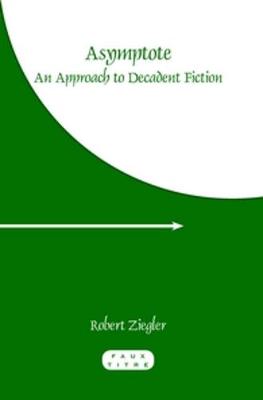Faux Titre
2 primary works
Book 298
In an era when reality was aestheticized as collectibles, Octave Mirbeau unleashed his fiction like a destructive machine, setting fire to stale material and discredited ideologies, burning them as fuel and expelling texts as clean emissions. In this first English-language overview of all the novels published under Mirbeau's name, this study argues that Mirbeau is unique among his fin-de-siecle peers. Unlike the Decadents, whose art was a reliquary in which dead inspiration was preserved, Mirbeau disengaged himself from the corpses of past works. Abhorring tradition and complacency, Mirbeau elaborated a kinetics of fiction that made the novel into an agent of violent transformation.
Contrasting the Decadents' aesthetic of elegant morbidity with Mirbeau's vitalistic view of fiction, this volume shows Mirbeau modeling himself on the figure of the torture artist, cutting up his finished works, building novels to disassemble them, fitting them together in revolutionary ways. Creativity for Mirbeau fertilizes un jardin des supplices, a cemetery smoldering with decomposing texts that are resolved into their constituent parts and then reemerge in different guises. In Mirbeau's writing, lives and art works are only transient aggregates of material, and creativity is immortalized through the perishing of old forms.
Contrasting the Decadents' aesthetic of elegant morbidity with Mirbeau's vitalistic view of fiction, this volume shows Mirbeau modeling himself on the figure of the torture artist, cutting up his finished works, building novels to disassemble them, fitting them together in revolutionary ways. Creativity for Mirbeau fertilizes un jardin des supplices, a cemetery smoldering with decomposing texts that are resolved into their constituent parts and then reemerge in different guises. In Mirbeau's writing, lives and art works are only transient aggregates of material, and creativity is immortalized through the perishing of old forms.
Book 338
Asymptote: An Approach to Decadent Fiction offers a radically new approach to the psychology of Decadent creation. Rejecting traditional arguments that Decadence is a celebration of deviance and exhaustion, this study presents the fin-de-siecle novel as a transformative process, a quest for health. By allowing the writer to project into fiction unwanted traits and destructive tendencies - by permitting the playful invention of provisional identities -, Decadent creation itself becomes a dynamic act of creative regeneration.
In describing the interrelationship of Decadent authors and their fictions, Asymptote uses the mathematical figure of the asymptote to show how they converge, then split apart, and grow distant. The author's approach to the facsimile selves he plays with and discards is the curve that never merges with his authorial identity.
In successive chapters, this study describes the Decadents' experimentation with perversion (Huysmans's A rebours and Mendes's Zo'har), and their subsequent validation of social regulation and creative discipline. It examines magic and its appeal to fantasies of elitism and omnipotence (Peladan's Le Vice supreme and Villiers's Axel ), then shows authors embracing the values of community and service. It considers the Decadent text as a vehicle of change in which an artist ventilates fantasies of aggression and revenge (Mirbeau's Le Journal d'une femme de chamber and Rachilde's La Marquise de Sade) then employs writing as the means by which these feelings are discharged. It examines creation as a form of play, "une alienation grace a laquelle l'esprit se recupere sous la forme des autres" (Schwob's Vies imaginaries and Lorrain's Histoires de masques), yet notes the Decadents' decision to return to a single generative center. Finally, it examines creation as an expression of artistic transience and failure, yet shows the Decadents' success in commemorating the very forces of disintegration (Rodenbach's L'Art en exil). In considering the Decadents' insistence on subjectivism and aloneness, this study concludes (Gourmont's Sixtine) by showing their wish to escape the prison of identity and to redefine their art as cooperative creation.
In describing the interrelationship of Decadent authors and their fictions, Asymptote uses the mathematical figure of the asymptote to show how they converge, then split apart, and grow distant. The author's approach to the facsimile selves he plays with and discards is the curve that never merges with his authorial identity.
In successive chapters, this study describes the Decadents' experimentation with perversion (Huysmans's A rebours and Mendes's Zo'har), and their subsequent validation of social regulation and creative discipline. It examines magic and its appeal to fantasies of elitism and omnipotence (Peladan's Le Vice supreme and Villiers's Axel ), then shows authors embracing the values of community and service. It considers the Decadent text as a vehicle of change in which an artist ventilates fantasies of aggression and revenge (Mirbeau's Le Journal d'une femme de chamber and Rachilde's La Marquise de Sade) then employs writing as the means by which these feelings are discharged. It examines creation as a form of play, "une alienation grace a laquelle l'esprit se recupere sous la forme des autres" (Schwob's Vies imaginaries and Lorrain's Histoires de masques), yet notes the Decadents' decision to return to a single generative center. Finally, it examines creation as an expression of artistic transience and failure, yet shows the Decadents' success in commemorating the very forces of disintegration (Rodenbach's L'Art en exil). In considering the Decadents' insistence on subjectivism and aloneness, this study concludes (Gourmont's Sixtine) by showing their wish to escape the prison of identity and to redefine their art as cooperative creation.

